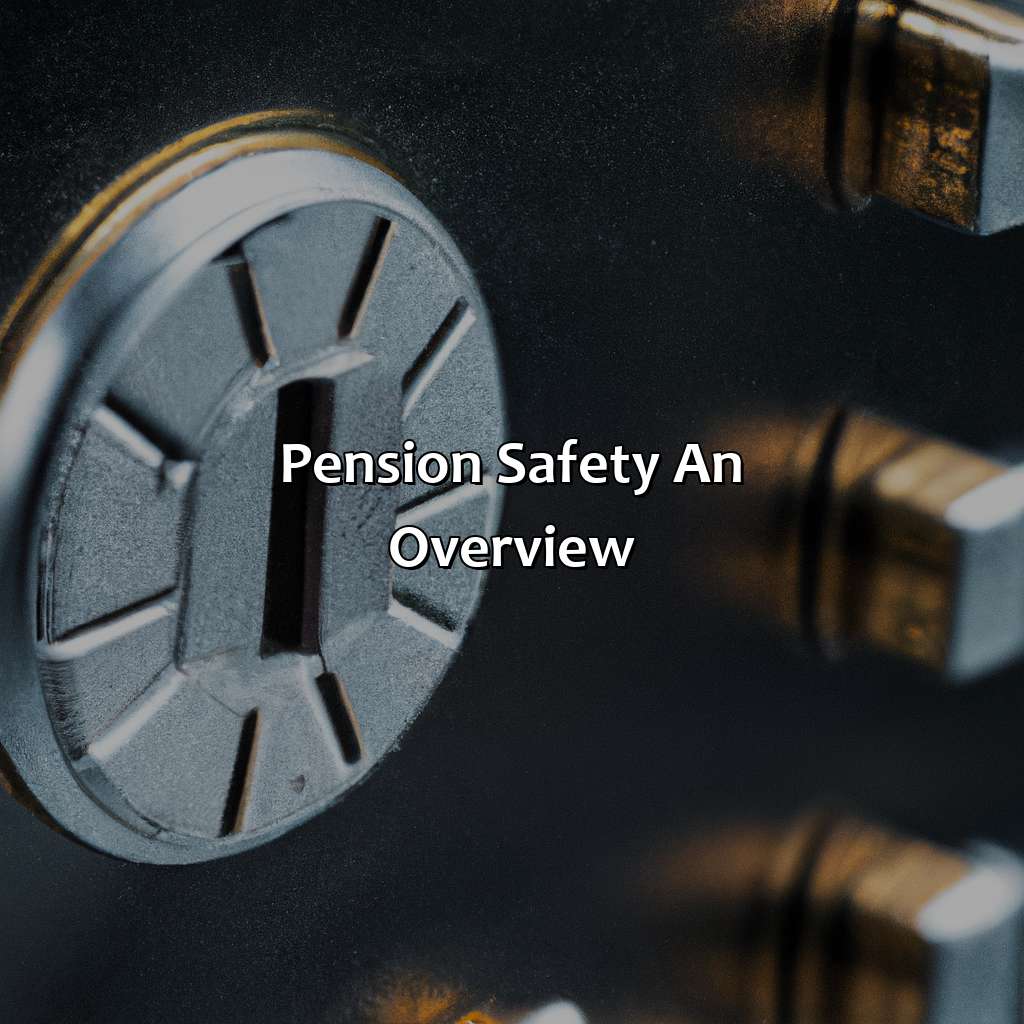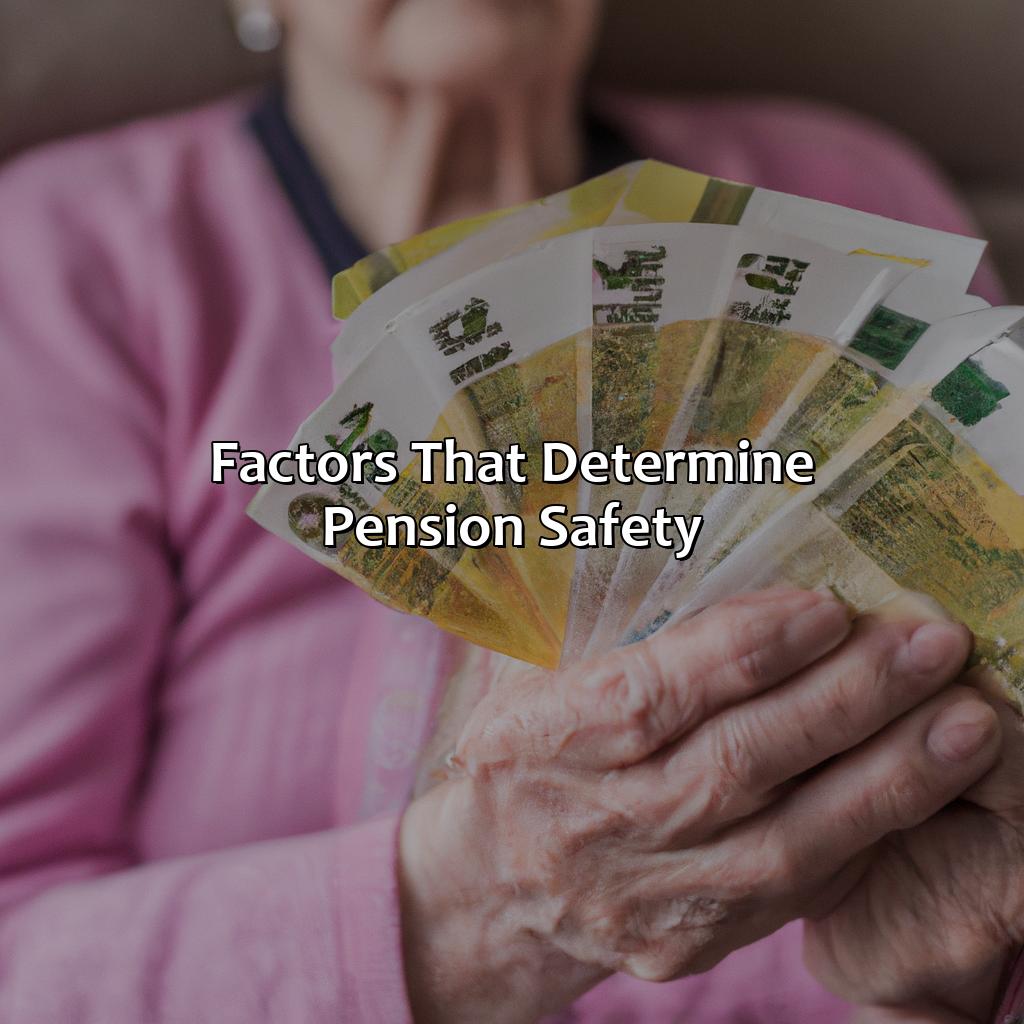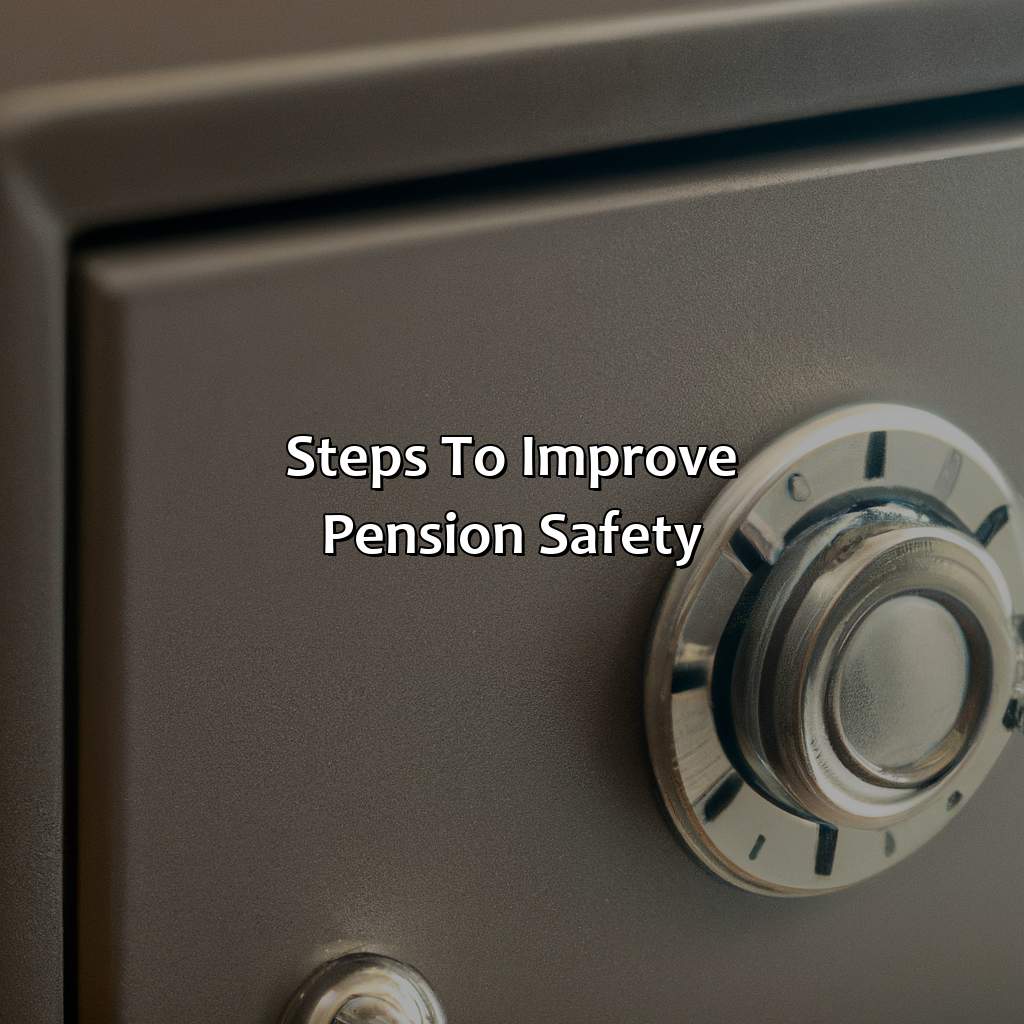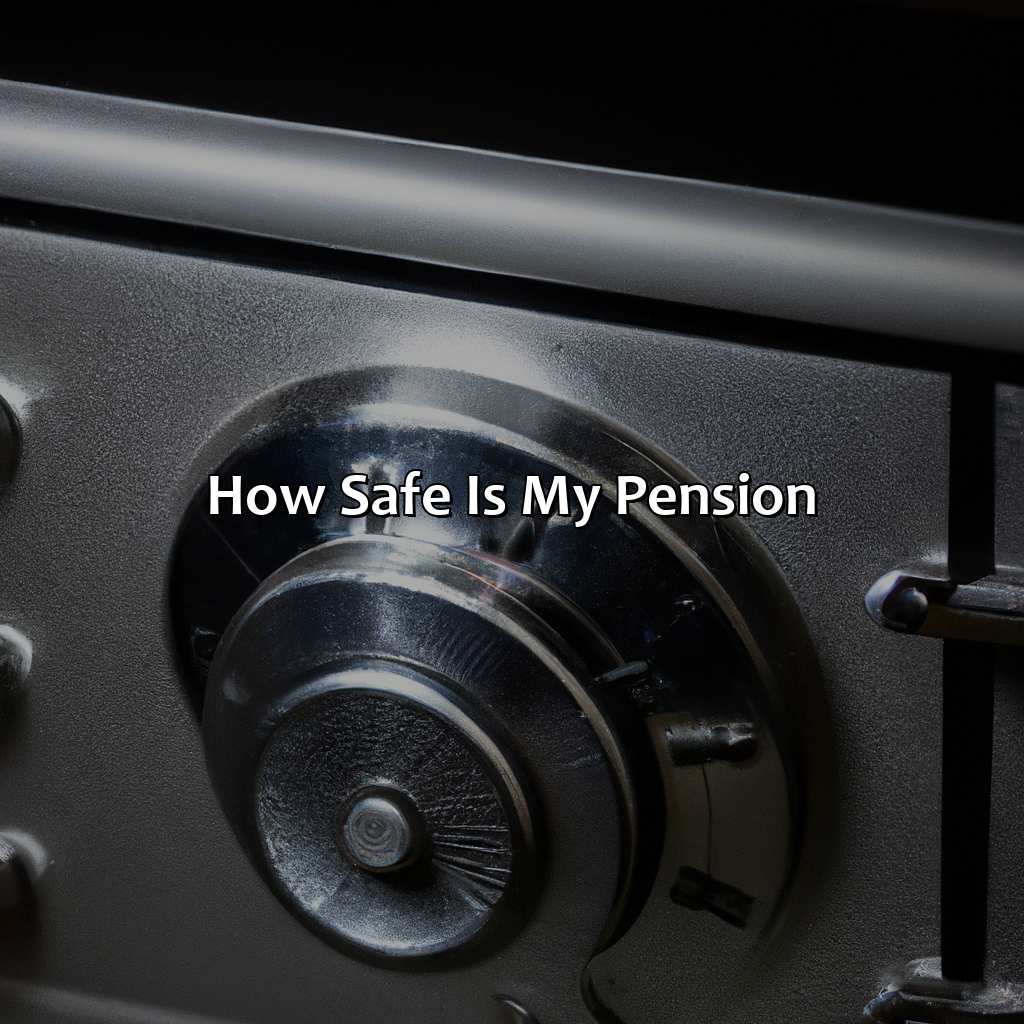How Safe Is My Pension?
Key Takeaway:
- Pension safety is determined by several factors, including pension scheme funding levels, investment returns, employer solvency, and regulatory framework.
- Pension protection measures, such as the Pension Protection Fund, Financial Services Compensation Scheme, and Pension Regulator intervention, can help ensure pension security.
- To improve pension safety, individuals should research pension scheme security, diversify their investment portfolio, review pension contributions, and monitor investment risk.
Are you worried about your pension safety?You need to make sure that you have saved enough for retirement without taking any risks. In this blog, we’ll discuss how to make sure your pension is safe.
Pension Safety: An Overview
Pensions: Understanding the Safety Aspect
Pension safety is a crucial element to consider when planning one’s retirement. The security of pensions depends on various factors such as the type of pension, the company managing it, and market trends. Have you ever wondered what happens to your pension if you are dismissed? It’s important to investigate this thoroughly to ensure your pension is protected.
With defined benefit schemes, the employer shoulders the investment risks and guarantees a fixed income. In contrast, defined contribution schemes place investment risks on the individual. It is essential to scrutinize the pension provider’s financial standing and read the fine print when deciding when to take a pension.
When comparing pension plans, it is beneficial to take note of the Pension Protection Fund (PPF), which provides compensation to members of defined benefit pension schemes if their plan provider becomes insolvent. However, the PPF may not cover the entire pension amount, and it does not apply to defined contribution schemes. It is important to understand how you can lose your pension and take necessary steps to secure it.
Pro Tip: Regularly reviewing and updating pension plans can ensure they remain in line with one’s retirement goals. It is wise to seek professional financial advice before making any changes or investments.

Image credits: retiregenz.com by Joel Washington
Factors that Determine Pension Safety
As a retiree, one may often wonder about the safety of their pension fund. Several factors determine the security of a pension scheme, including:
- The regulatory environment
- The funding ratio
- Asset allocation
- Investment policy
A favorable regulatory environment with strict guidelines ensures appropriate management of the fund. A healthy funding ratio indicates sufficient assets available to cover accrued liabilities. A well-diversified asset allocation and investment policy with a focus on long-term growth can mitigate risks and generate higher returns.
Moreover, the demographic and economic factors on the labor market and interest rates also impact pension safety. An aging workforce or stagnant economy can result in lower contributions and funding deficits, leading to a weak pension plan. Conversely, high-interest rates can lead to guaranteed benefits, strong funding, and overall pension safety for members. If you’re wondering what the penalty is for taking your pension early, it’s important to weigh the potential risks and benefits before making a decision.
According to the Pension Benefit Guaranty Corporation, over 80% of pension plans are adequately funded. However, one should still research and assess their plan to ensure its safety and solvency.

Image credits: retiregenz.com by Adam Arnold
Pension Protection Measures
Pension Safety Measures can ensure the security of one’s retirement savings. The options include Pension Protection Fund, Guaranteed Pension Schemes, and Pension Insurance Schemes. These measures provide financial protection in case the pension fund fails to meet its obligations.
Pension Protection Funds can provide compensation to members of eligible defined benefit pension schemes. These funds have distinct levy systems to ensure sufficient funding. On the other hand, Guaranteed Pension Schemes come with a guarantee from an insurance company that ensures members’ pension is paid in full. Lastly, Pension Insurance Schemes protect members by providing an insurance policy to safeguard their pension investments.
When it comes to retirement, many people wonder when does their pension stop. Understanding the different types of pension schemes and their benefits can help you make informed decisions about your retirement plan.
To learn more about what happens if you have no pension, it’s important to understand the different options available for protecting your retirement savings. Pension Protection Funds, Guaranteed Pension Schemes, and Pension Insurance Schemes are some of the ways you can ensure a secure financial future.
It is essential to note that the pension schemes have different protection levels and criteria. Moreover, factors such as the type of pension scheme and the size of the pot affect the application of these safety measures. If you’re wondering when you can withdraw from your pension, it’s best to consult with a financial advisor to understand the specifics of your plan.
Pension holders should ensure they review their pension’s safety provisions regularly. Additionally, maintaining complete and accurate records is also crucial. Seeking professional advice can also help one understand the specific details of their pension protection options. Ultimately, understanding the pension safety measures can help mitigate pension risks.

Image credits: retiregenz.com by David Arnold
Steps to Improve Pension Safety
In view of recent concerns, a secure pension is crucial to the financial stability of retirees. Below are a few guidelines to ensure a safe pension:
- Investigate the retirement plan option before enrolling.
- Verify the legitimacy of the pension provider.
- Monitor the pension performance regularly and have a contingency plan in case of unexpected changes.
- Choose a pension plan that caters to long-term goals and offers flexibility in withdrawal options.
It is important to note that pension safety depends on various factors such as investment performance, economic conditions and the retirement plan provider’s credibility.
Many individuals have recently experienced difficulties accessing their pensions due to unforeseeable events such as the pandemic. For instance, a study conducted by the Insured Retirement Institute in 2020 shows that over 40% of retirees had to adjust their retirement plans due to Covid-19.
If you are wondering when can pension be withdrawn, it varies based on the type of pension plan you have. It is important to consult with your plan provider to fully understand the withdrawal rules and potential tax implications.
In the past, there have also been instances where pension funds have been mismanaged or go bankrupt, causing significant financial loss for retirees. Hence, it is important to take the necessary precautions to ensure a secure future.

Image credits: retiregenz.com by James Duncun
Five Facts About How Safe Your Pension Is:
Your pension is protected by law and regulated by governing bodies such as the Financial Conduct Authority (FCA). (Source: Money Advice Service)
Pension schemes are required by law to be protected by the Pension Protection Fund (PPF) to provide compensation in case of insolvency. (Source: PPF)
The Pension Wise service provides free and impartial guidance on pension options and retirement planning. (Source: Pension Wise)
Pension providers and financial advisors are regulated and must meet certain standards and requirements for advice and management of pension funds. (Source: FCA)
Your pension may be affected by market changes and economic factors, but diversification and regular reviews with your provider can help mitigate risk. (Source: Money Advice Service)
FAQs about How Safe Is My Pension?
How safe is my pension?
Your pension is typically considered safe because it is a regulated investment. However, there are certain factors that can affect its safety, such as the type of pension plan, the financial health of the company managing your plan, and economic conditions.
What types of pension plans are available?
There are two main types of pension plans: defined benefit and defined contribution. A defined benefit plan guarantees a certain amount of retirement income, while a defined contribution plan allows you to contribute a portion of your income to a retirement account that you manage, such as a 401(k).
How do I know if my pension plan is financially healthy?
You can research the company managing your pension plan by checking their financial statements and credit ratings. You can also check if your plan is backed by the Pension Benefit Guaranty Corporation (PBGC), a government agency that provides insurance for certain pension plans.
What happens if my pension plan’s company goes bankrupt?
If your pension plan’s company goes bankrupt, your pension plan may be taken over by the PBGC. Depending on the type of plan you have, you may receive reduced benefits or the PBGC may take over the entire plan.
Can I lose my pension benefits?
It is possible to lose some or all of your pension benefits if the company managing your plan becomes insolvent and the PBGC is unable to fully cover the plan’s liabilities. It is also possible for your plan’s benefits to be reduced if the plan’s funding level falls below a certain threshold.
What steps can I take to protect my pension?
To protect your pension, you can ensure that you are enrolled in a financially stable pension plan, monitor your plan’s funding level, and diversify your retirement savings by contributing to other types of retirement accounts.
 Checkout this IRS Loophole
Checkout this IRS Loophole 
